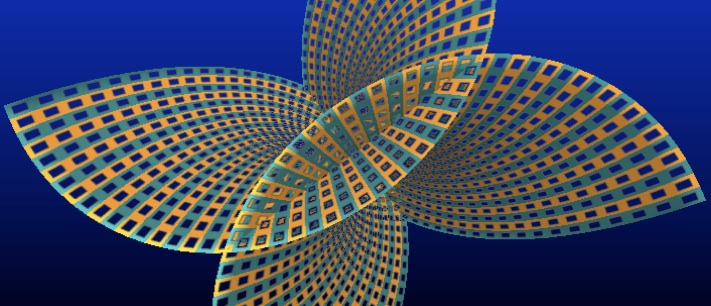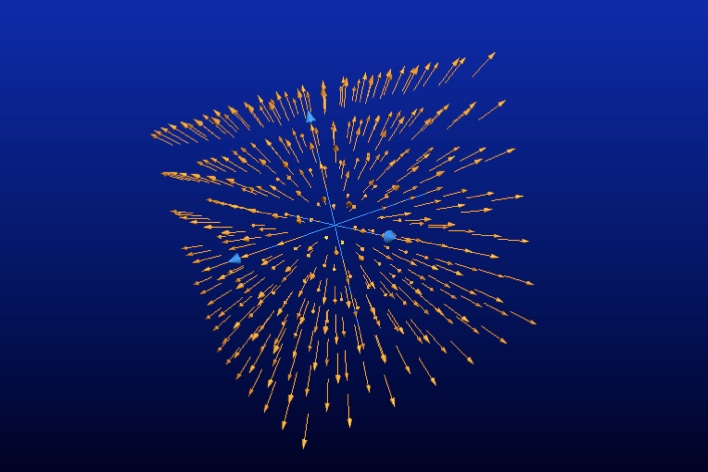Chris Wood Personal Web Pages
2019
Harmonic maps, morphisms & sections
The use of variational principles in differential geometry to distinguish and study interesting geometric objects is a fundamental theme which runs throughout the subject. For example, the following are all defined, or characterised, as critical points of an appropriate functional: geodesics, minimal surfaces, constant mean curvature surfaces, Willmore surfaces, harmonic differential forms, Einstein metrics, Yang-Mills fields, generalised Calabi-Yau manifolds ... As a generalisation of geodesics, minimal surfaces and harmonic differentials, harmonic mappings of Riemannian manifolds have been actively studied for over 40 years, starting with the seminal paper of J. Eells and J.H. Sampson, Harmonic mappings of Riemannian manifolds, Amer. J. Math. 86 (1964), 109-160. The delicate balance between their analytic and geometric properties makes harmonic maps especially attractive. The extent of harmonic map research may be gauged by this online bibliography. More recently, research has grown into the related theories of harmonic morphisms, and harmonic sections (my own area of interest). These two are in some sense dual, in that harmonic morphisms are (usually singular) submersions which specialise harmonic maps, whereas harmonic sections are (usually regular) immersions which generalise harmonic maps. In essence, the harmonic section variational problem is to analyse the behaviour of the vertical analogue of the harmonic map energy functional on the manifold of sections σ of a submersion π : (N, h) → (M, g) of Riemannian manifolds. This analysis is particularly focused on the critical points, the harmonic sections. In general, provided π has totally geodesic fibres, harmonic sections are characterised by a system of quasi-linear second order elliptic PDEs. In many situations, π is a fibre bundle, and h is a Kaluza-Klein metric arising from a connection in π. When the bundle is flat, its harmonic sections are locally the graphs of harmonic maps into the fibre, and as such are sometimes called twisted harmonic maps. In general, finding solutions of the harmonic section equations is a delicate piece of mathematical detection, employing a blend of analytic and geometric techniques which varies from one bundle to another.
Harmonic symmetry reduction, and harmonic geometric structures on manifolds
Non-flat, non-linear, non-trivial fibre bundles of considerable geometric interest are those with homogeneous fibre G/H, and the theory of harmonic sections of such bundles may be regarded as a generalisation of the theory of harmonic maps into homogeneous spaces. If G is the full structure group of the Riemannian n-manifold (M, g) (usually O(n) or SO(n)) and H is the symmetry group for some additional geometric structure on M, the sections σ of N then parametrize all possible H-structures on M. Harmonic sections σ naturally generalise the horizontal sections of N, which in geometric terms parametrize the holonomy-invariant H-structures. The existence of holonomy-invariant H-structures means that the holonomy group of M must be reducible from G to H. Holonomy measures the extent to which the manifold deviates from flatness, and reduction of holonomy is a strong condition, with its own rewards and challenges. For example, Riemannian manifolds with reduced holonomy often enjoy highly specialised and desirable properties, such as Einstein’s equations, but finding examples can be difficult. Many of the restrictions imposed by reducible holonomy, which may be topological as well as geometric, are circumvented by relaxing horizontality to harmonicity, and this gives a natural way to define a broader category of “good” geometric structures. Geometric structures which have been studied from this point of view include almost product structures (which include foliated manifolds), and almost complex structures (which include complex manifolds). A particularly popular area of research has been that of harmonic unit vector fields. (These should not to be confused with vector fields which are harmonic in the sense of Hodge-de Rham, which is essentially a linear theory). Many examples of harmonic unit fields arise as components of more complicated geometric structures called almost contact metric structures, a class of geometric structures on odd-dimensional manifolds which include contact manifolds. The ideas of harmonic symmetry reduction have recently been extended to almost contact metric geometry.






